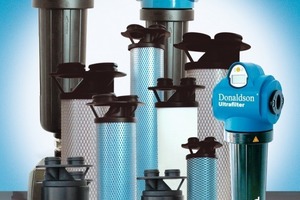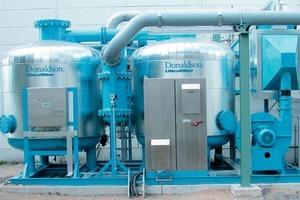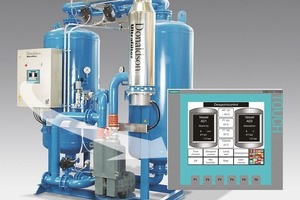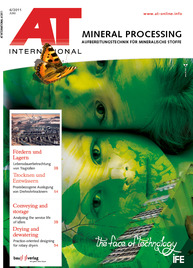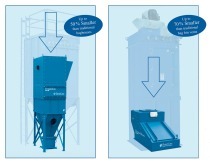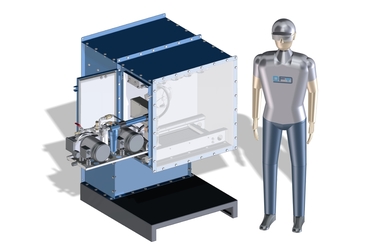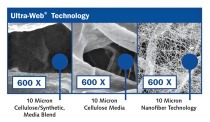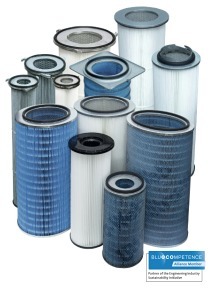Innovative filtration and drying technologies reduce operating costs
Filtration and adsorption drying systems are basic technologies for the processing of compressed air and gases, which are used as process utilities. The reduction of the operating costs and, consequently, also of the power requirement in the preparation process, is a special challenge for the manufacturers of filters and dryers. The following examples show and the filtration specialist Donaldson clearly illustrated at the Hanover Fair 2011 that essential cost savings can be achieved by means of innovative filtration technologies and tailored drying systems.
The decisive factor for the determination of the life cycle costs of compressed-air filters is the indirect energy consumption that is due to the differential pressure. The differential pressure is reduced by up to 50 % during operation with working pressure compared to customary filters when using compressed-air filters, type Ultra-Filter DF (Fig. 1). The pressure loss of customary filters amounts to 450 to 500 mbar in the wetted condition, that of the wetted Ultra-Filters from Donaldson amounts to about 250 mbar only. This halving can approximately be quantified in euro and cents: The user will save more than 1500 € of energy costs per year with a flow rate of 1100 m³/h if the differential pressure is lower by only 200 mbar. This amount is higher than the costs for the entire filter. Thus, the investment will pay itself off within a few months even if the existing filter casing will be replaced. The performance data of the “energy saving filters” have been tested and validated according to the new international filter standard ISO 12500-1.
Further savings in energy costs will be achieved by the timely replacement of the used filter element. The economizer will determine the most economic time for this by continuously measuring the differential pressure. The integrated microprocessor evaluates the measured data and compares the higher energy costs due to the pressure loss with the costs of the new filter element. The most cost-effective time of replacement of the filter element is calculated and the light-emitting diodes signal the “replacement of the filter”.
The adsorption drying technology is just as important as the filtration technology. Tailored systems offer economic and efficient processing for the user. Adsorption dryers are the right choice if very low residual moistures or pressure dew points below 0 °C are required. Basically a difference must be made between two types: heatless- and heat-regenerating adsorption dryers.
Heatless-regenerating adsorption dryers are predominantly used for smaller power ranges. For example, the series Ultrapac® Classic is used to process amounts of compressed air starting already at 5 m³/h. In total, the range of performance of this series goes up to 35 000 m³/h. As regards heat-regenerating systems, various types with external and internal generation of the regeneration heat are available for performance ranges of up to 80 000 m³/h (Fig. 2). Plants that use the existing waste heat of compressors, for example, or the process heat for regeneration are particularly economic. In this case individual engineering is always required, which, however, pays off for the user because the energy costs and, consequently, the life cycle costs can clearly be reduced. Before investing in a new compressed-air system, the user should first check whether a standard adsorption dryer or an individual solution would be better for him.
The control engineering used in the adsorption dryers is pointing the way ahead. It informs the user about the operating condition of the dryer. The transparency at the human-machine interface is further increased due to the standard design with touch panels. This applies to all heat-regenerating adsorption dryers in the series HRE, HRG, HRS, HRS-L and HRC as well as for the tailored system solutions (Fig. 3). The basic setting of the multilingual panel shows the present operating state as well as the relevant operating parameters, such as pressure, temperatures and dew point. By touching the corresponding control panel, further information can be recalled.
The main control menu can also be accessed via this user-friendly interface. Authorized staff may adapt the operating parameters to the ambient conditions and operating requirements. The service technician also parametrizes the plant via the touch panel and can access for example, additional diagnosis information.
www.donaldson.com

